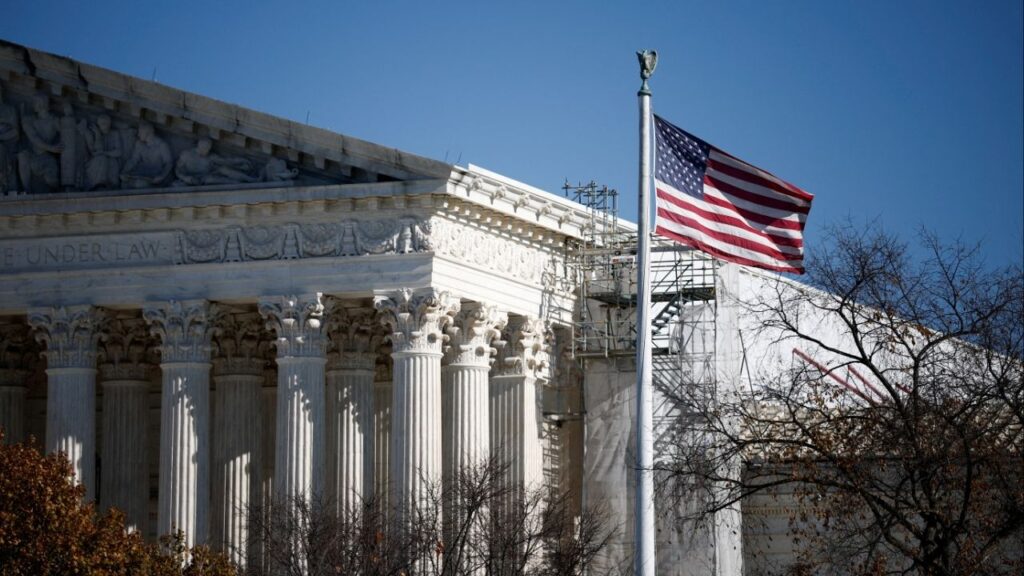President Joe Biden holds up a proclamation designating the Baaj Nwaavjo I'Tah Kukveni National Monument at the Red Butte Airfield on Aug. 8, 2023, in Tusayan, Ariz. (AP File)

- Reports about possible U.S. lands getting national monument status make no mention of 1.4 million acres in the Sierra National Forest.
- Most of President Biden's national monument designations have protected Native American cultural sites or create memorials for historical sites.
- Unlike other national monuments for Native American cultural sites where tribes were involved in the process, the Picayune Rancheria of Chukchansi Indians oppose the Range of Light.
Share
|
Getting your Trinity Audio player ready...
|
With the number of days President Joe Biden has left to make decisions becoming fewer and fewer, the list of U.S. places set for national protection appears set — with no mention of a proposal to transform to 1.4 million acres in the Sierra National Forest.
Presidents can declare lands as national monuments, restricting their use to protect them. With the designation comes limitations on uses.
Many hikers, hunters, off-roaders, and residents of the Sierra National Forest spoke out in opposition to a proposal to turn the land including Huntington, Edison, and scores of other Sierra lakes into a monument, called the Range of Light.
Biden’s previous designations line more up with how many lawmakers interpret the intention of the 1906 Antiquities Act — protecting places of historical, cultural significance, or unique national features.
Many of Biden’s other designations include protections for Native American cultural sites. Affected tribes were at the negotiating table for many of the designations.
But the Picayune Rancheria of Chukchansi Indians say in a news release they haven’t been included in any meaningful discussions about the Range of Light proposal. With their opposition to the Range of Light, the possibility of a new national monument appears dim.
Related Story: ‘Leave It the Way It Is’: Off-Roaders, Hikers React to Proposal to ...
Most of Biden’s Monument Designations Have Historical Significance
Recent news reports about national monument designations make no mention of the Range of Light National Monument. A map of proposals from the Associated Press does not include one for the forest between Yosemite and Sequoia/Kings Canyon national parks.
GV sent requests to the Department of the Interior and the White House inquiring about status of the Range of Light proposal.
Biden has until Jan. 20 to make a decision, when President-elect Donald Trump takes office. Trump has vocally opposed many national monument designations. Presidents can undo other presidential actions by executive order.
Throughout his term, Biden has created six monuments and either restored, enlarged, or changed boundaries for others, the Associated Press reports.
Biden’s first act created Bears Ears and Grand Staircase-Escalante in southern Utah, the protection for which has gone back and forth after President Donald Trump shrank the area first made during President Barack Obama’s administration.
Related Story: How About an Honest Conversation About the Range of Light Monument Proposal?

Biden also created the Avi Kwa Ame National Monument in Nevada and Baaj Nwaavjo I’tah Kukveni National Monument in Arizona, both for their significance to Native American cultures.
He also designated sites remembering the 1908 race riots in Springfield, Illinois, and three sites in Illinois and Mississippi honoring Emmett Till and his mother, Mamie Till-Mobley, according to the Associated Press. Till was a Black teenager from Chicago who was abducted and killed in 1955 after being accused of whistling at a white woman in Mississippi.
A proposal is still on the president’s desk to create a national monument for North Tulsa, Oklahoma — the site of the 1921 Tulsa Race Massacre.
Closer to Fresno, Biden appears ready to expand Joshua Tree National Park by 620,000 acres and title it the Chuckwalla National Monument, according to the Desert Sun newspaper. While the creation was expected this week, the funeral for President Jimmy Carter may delay that.
The designation bans mining in the massive swath of land near Joshua Tree and where the Mojave, Colorado, and Sonoran deserts meet.
U.S. Secretary of the Interior Deb Haaland toured the area, which includes Painted Canyon in east Coachella Valley. The designation would also protect migratory birds, endangered tortoises, and other rare wildlife and plants.

Range of Light Would Limit Forest Uses
The Range of Light proposal largely came from the advocacy group Unite the Parks, led by Deanna Wulff. The proposal got the support of 52 California lawmakers, who called on Gov. Gavin Newsom to pressure Biden to make the designation.
While the particulars of restricted recreational uses in the proposal were not outlined — leaving it to the National Park Service to decide — it would sunset animal grazing contracts as well as logging and mining contracts. Unite the Park also openly opposes 4-wheeling, which is popular in that area of the forest.
Many said the change would restrict access to the forest, as entry is for the most part not limited as it is in Yosemite and Sequoia/Kings Canyon national parks.
RELATED TOPICS:
Categories

MAHA Activists Urge Trump to Fire His EPA Administrator

Meta Strikes Multiple AI Deals With News Publishers

















